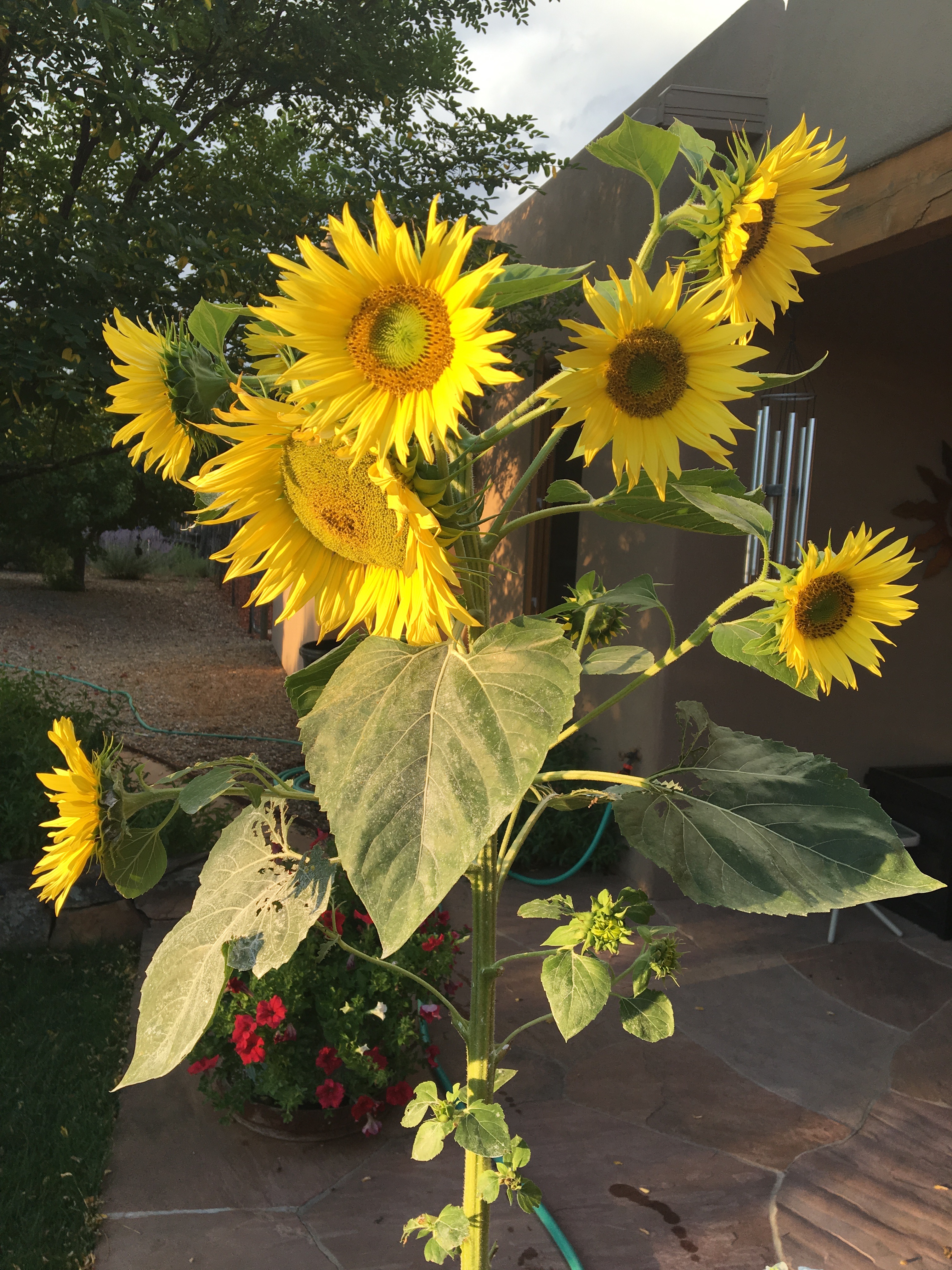The Wonder of Gratitude »
By Barbara Doern Drew and Walter Drew |
Walter Drew and Barbara Doern Drew have been involved with Science of Mind as students, teachers, writers and through leadership roles for more than 20 years. Contact them at DrewDoernDrew@Gmail.com.
“There is a fundamental spiritual quality to gratitude that transcends religious traditions. Gratitude is a universal human experience that can seem to be either a random occurrence of grace or a chosen attitude to create a better experience of life; in many ways it contains elements of both. Grateful people sense that they are not separated from others or from God; this recognition of unity with all things brings a deep sense of gratefulness, whether we are religious or not.”
Angeles Arrien’s description above captures much of the essential nature of gratitude and its importance to a meaningful, interconnected existence. A cultural anthropologist, author and shaman, Arrien delves into the many dimensions of gratitude from a multicultural perspective in her book “Living in Gratitude: A Journey That Will Change Your Life.” We spent several months on a journey of experiencing the transformational effects of a daily spiritual practice of gratitude. Here’s what we learned.
Expressions of Gratitude
The expression of gratitude takes many forms. Perhaps most simply, gratitude can be expressed as a “thank you” when someone does something kind. While this automatic response is valuable and may be genuine, there can also be a perfunctory quality to it that limits its potential full effect on both the person saying it and the one receiving it.
We can make a conscious decision to seek out things to be grateful for, making gratitude a regular spiritual practice in our lives. In doing so, we develop what Arrien refers to as “grateful seeing.” She elaborates: “The ability to look first for what is good and working in our lives without minimizing or denying the hardships or challenges that are also present. Focusing on the benefits and goodness that are all around us leads to feelings of gratitude, and this creates a multiplier effect: The experience of gratitude generates a sense of well-being. And the better we feel, the more good we will do. Gratitude and the actions it stimulates also build and strengthen social bonds and friendships.
“This practice of grateful seeing, looking for the good, allows us to see the gift of love — given and received — that is present in our lives.”
Thankful expression may also be anticipatory gratitude. In the five-step affirmative prayer developed by Dr. Ernest Holmes, gratitude is the critical fourth step. Once we acknowledge that Spirit is all there is and that we are one with this power, and we speak our words for some outcome, we give thanks in advance for knowing that what we have declared is already done in the Mind of God. There is no more for us to do except release it into the law of cause and effect to manifest in form. This is a high-level gratitude consciousness where we tap into the truth of how life works.
In its own category, outside of our personal volition, is the numinous gratitude we experience in moments of grace, when it wells up from within us unbidden. When this occurs, we are often overcome with feelings of joy and unbounded love, frequently accompanied by tears. There may be no “object” for this gratitude, as we are filled with the wonder and awe of being alive and the majesty of the human experience. This is a state of pure being, where no action is necessary.
However we express our gratitude, being grateful enhances our lives and, by extension, the world. According to Robert Emmons, the eminent scientific expert on gratitude, “The significance of gratitude lies in its ability… to enrich human life. Gratitude elevates, it energizes, it inspires, it transforms. People are moved, opened and humbled through experiences and expressions of gratitude. Gratitude provides life with meaning by encapsulating life itself as a gift. Without gratitude, life can be lonely, depressing, impoverished.”
Grateful Seeing in Action
Here is Barbara’s recent exploration of gratitude: In February 2016, I tore the meniscus in my right knee and could neither bend, straighten nor put weight on my leg for the three weeks before surgery. I had to cancel a trip with Walter to the annual Spiritual Living Convention, which added an element of emotional disappointment. I realized that I could either take the stance of feeling like a victim, or I could use the experience as an opportunity for growth. I set an intention to focus on the latter, and as soon as Walter left for eight days, I started a gratitude journal to begin to consciously look for the blessings in the situation.
Beginning with writing about my gratitude for small things in the moment — the constant companionship of our spirited cats and devoted golden retriever, the setting sun lighting up the New Mexico winter sky and so on — my gratitude expanded to many areas of my life, flowing more and more freely over the next eight days. I got back in touch with how much I love journaling in the treasured quiet moments of the day.
Friends and family stepped up to help out, and I realized that none of this deepening of relationships with others would have occurred had I not hurt my knee. Establishing a practice of grateful seeing during this time led to its continuation over the next few months and into the present, creating a shift to seeing the presence of Spirit everywhere when I pay attention. I feel more peaceful, content and connected with the life around me.
Walter shares his gratitude for another kind of grateful seeing, that which is brought about by the perspective of time: A preteen physical exam led me to believe that I was not whole, perfect or complete. I believed that I could not produce offspring, and I was teased, ridiculed and unhappy for several years.
Looking back with a 60-year perspective, I can express gratitude for that time in my life that seemed so painful. I realize that who I am today has been in large part shaped by those circumstances, which led me to move 2,000 miles away from home to create a new life in a new state. They led me to a unique creative expression that likely never would have found form had I stayed where I was raised. I have come to know that regardless of outer appearances, we are all whole, perfect and complete, just as we are. There is no need for regret, just gratitude to be expressed.
Opportunities for Gratitude Abound
It’s amazing how when we start seeking out things for which to be grateful, we find that they are limitless. The list we developed from our own life experiences moves through many categories, from our 28-year ever-evolving relationship and loving family members, friends and pets to our meaningful careers, the spiritual communities in which we are involved and the opportunities for service. It meanders through our colorful gardens to the natural beauty of planet Earth and its sustaining resources. We acknowledge the impact of profound spiritual teachers and teachings on us individually, our relationship and the larger world. We are grateful for the healers who have showed up to assist us through challenging situations.
We also give thanks for the spiritual practices that weave through our lives, assisting us in our conscious evolution. Meditation, reading the inspirational Daily Guides in this magazine and expressing gratitude are part of our daily routines. Other valuable practices include forgiveness, compassion for self and others, releasing old beliefs and patterns, visioning, living in accord with our life purpose, and taking and teaching inspirational classes.
We have discovered that we can even be grateful for the painful or challenging circumstances in our lives. We are working on shortening the time between being grateful in hindsight to being grateful as close to the difficult event as possible and, ultimately, during it. We have learned over time that Spirit is always present and that these kinds of situations have produced great personal growth, providing tools we use in everyday life.
Expanding beyond the visible universe, we are grateful for the one indivisible Source of all life, which has chosen to express itself in wildly diverse forms throughout the cosmos and supports each one of us with its ever-present love, wisdom and creativity.
The Impact of Gratitude
Arrien acknowledges the transformative power of gratitude: “Through conscious and sustained practice over a period of time, we can discover again how gratitude and all its related qualities — thankfulness, appreciation, compassion, generosity, grace and so many other positive states — can become integrated and embodied in our lives. And when people in great numbers choose to practice, integrate and embody gratitude, the cumulative force that is generated can help create the kind of world we all hope for and desire for ourselves and for future generations.”
Making Gratitude a Spiritual Practice
Once we begin to notice all the opportunities to be grateful, how do we go about making it a spiritual practice? Here are a few suggestions:
- We can set an intention to practice grateful seeing throughout the day, looking for the good in our experiences. A gratitude journal is a great tool for recording these observations, as is sharing them aloud with another person.
- Verbally expressing our gratitude is important. Saying “thank you” to our partner for taking out the trash or to someone who helps us in the grocery store creates a ripple effect that spreads the positive energy out into our immediate circles and beyond. When possible, tell the person specifically what you appreciate about them. The atmosphere tangibly shifts when we make these brief, heartfelt acknowledgments.
- In today’s busy world, sending cards with handwritten thank-you notes seems to be a lost art, but we all know how wonderful it is to receive a card in the mailbox. Online cards also enable us to share our gratitude.
- As a daily email routine, writing a short note or two to friends, family or colleagues, thanking them for who they are and what they do, helps us express our gratitude.
- If you experience disconnection from someone and have been feeling judgmental, think of three things you are grateful for about the person. This slight shift in focus begins to soften the edges and helps you move toward reconnection and appreciation.




